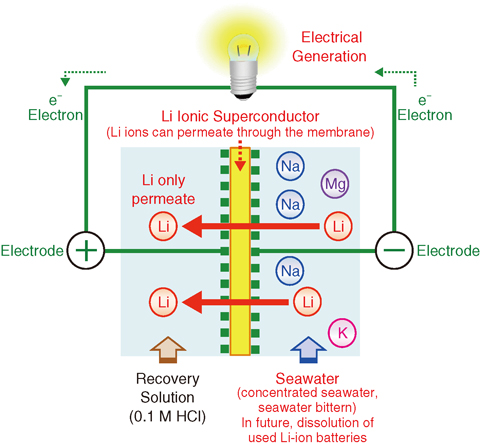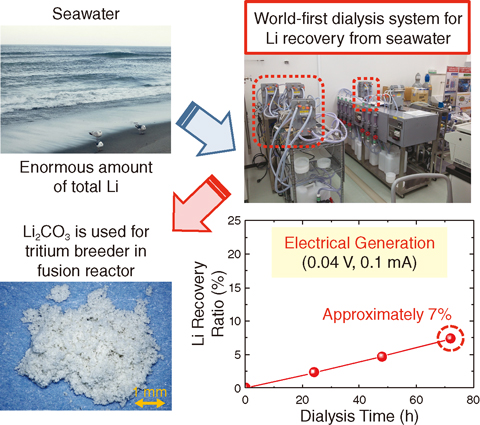
Fig.9-23 Li recovery from seawater by an innovative separation technique

Fig.9-24 Establishment of a Li recovery process for fusion reactors
Fusion reactors need deuterium and tritium as their fuel. Since tritium does not exist in nature, it is necessary to produce tritium in a reactor by neutron irradiation of lithium (Li). Furthermore, Li is rapidly becoming a valuable commodity. As a means of addressing global warming, the world is increasingly turning to the use of large Li-ion batteries in electric vehicles; therefore, there is a growing demand for Li.
Although Li is recovered from salt lakes in South America, the quantity of natural resources in these waters is limited. On the other hand, an enormous fraction of all Li on Earth is known to be present in seawater. The extraction of Li from seawater would allow a large amount of it to be inexpensively acquired. Therefore, Li procurement is a national policy issue worldwide. In particular, Japan relies solely on Li imports from overseas.
Here, we developed a technique for recovering Li from seawater by means of a Li ion superconductor. A potential difference exists between the negative and positive electrodes, even when a voltage is not applied. When a difference in Li concentration between the seawater and the Li recovery solution exists, Li ions flow through the Li ion superconductor. In other words, Li ions can be spontaneously recovered from seawater without the application of outside voltage (Fig.9-23).
Measurements of the Li ion concentration at the positive electrode side as a function of dialysis duration showed that the Li recovery ratio increased to approximately 7% after 72 h with no applied electric voltage. Moreover, other ions in the seawater (Na, Mg, Ca, and K) did not permeate the Li ion superconductor. The recovery solution (LiCl solution) was concentrated after treatment, followed by the addition of an aqueous solution of Na2CO3; in this fashion, Li2CO3 can be precipitated in an aqueous solution of NaCl (salt water), allowing for the easy extraction of Li2CO3 (Fig.9-24).
This world-first recovery technology shows good energy efficiency and is easily scalable. It should be suitable for the industrialized mass production of Li from seawater as well as for the recycling of used Li-ion batteries. In addition, as electricity is also generated in the separation process, a zero emission resource recovery capability is foreseen.